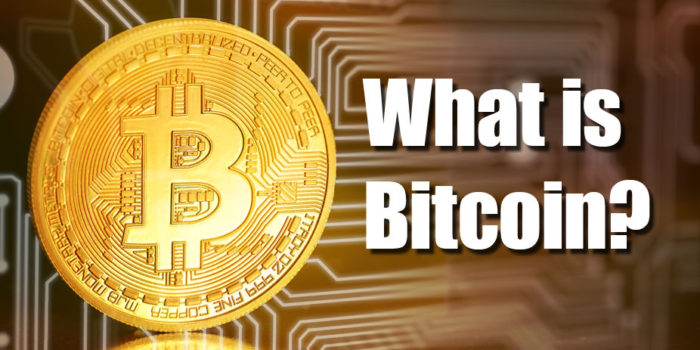Bitcoin is a digital currency created in January 2009 following the housing market crash. It follows the ideas set out in a whitepaper by the mysterious and pseudonymous Satoshi Nakamoto.1 The identity of the person or persons who created the technology is still a mystery. Bitcoin offers the promise of lower transaction fees than traditional online payment mechanisms and is operated by a decentralized authority, unlike government-issued currencies.
There are no physical bitcoins, only balances kept on a public ledger that everyone has transparent access to, that – along with all Bitcoin transactions – is verified by a massive amount of computing power. Bitcoins are not issued or backed by any banks or governments, nor are individual bitcoins valuable as a commodity. Despite it not being legal tender, Bitcoin charts high on popularity, and has triggered the launch of hundreds of other virtual currencies collectively referred to as Altcoins.
Key Takeaways
- Launched in 2009, Bitcoin is the world’s largest cryptocurrency by market cap.2
- Unlike fiat currency, Bitcoin is created, distributed, traded, and stored with the use of a decentralized ledger system known as a blockchain.1
- Bitcoin’s history as a store of value has been turbulent; the cryptocurrency skyrocketed up to roughly $20,000 per coin in 2017, but as of two years later, is currency trading for less than half of that.3
- As the earliest cryptocurrency to meet widespread popularity and success, Bitcoin has inspired a host of other projects in the blockchain space.
Understanding Bitcoin
Bitcoin is a collection of computers, or nodes, that all run Bitcoin’s code and store its blockchain. A blockchain can be thought of as a collection of blocks. In each block is a collection of transactions. Because all these computers running the blockchain have the same list of blocks and transactions and can transparently see these new blocks being filled with new Bitcoin transactions, no one can cheat the system. Anyone, whether they run a Bitcoin “node” or not, can see these transactions occurring live. In order to achieve a nefarious act, a bad actor would need to operate 51% of the computing power that makes up Bitcoin. Bitcoin has around 47,000 nodes as of May 2020 and this number is growing, making such an attack quite unlikely.4
In the event that an attack was to happen, the Bitcoin nodes, or the people who take part in the Bitcoin network with their computer, would likely fork to a new blockchain making the effort the bad actor put forth to achieve the attack a waste.
Bitcoin is a type of cryptocurrency. Balances of Bitcoin tokens are kept using public and private “keys,” which are long strings of numbers and letters linked through the mathematical encryption algorithm that was used to create them. The public key (comparable to a bank account number) serves as the address which is published to the world and to which others may send bitcoins. The private key (comparable to an ATM PIN) is meant to be a guarded secret and only used to authorize Bitcoin transmissions. Bitcoin keys should not be confused with a Bitcoin wallet, which is a physical or digital device which facilitates the trading of Bitcoin and allows users to track ownership of coins. The term “wallet” is a bit misleading, as Bitcoin’s decentralized nature means that it is never stored “in” a wallet, but rather decentrally on a blockchain.
Style notes: according to the official Bitcoin Foundation, the word “Bitcoin” is capitalized in the context of referring to the entity or concept, whereas “bitcoin” is written in the lower case when referring to a quantity of the currency (e.g. “I traded 20 bitcoin”) or the units themselves. The plural form can be either “bitcoin” or “bitcoins.” Bitcoin is also commonly abbreviated as “BTC.”
How Bitcoin Works
Bitcoin is one of the first digital currencies to use peer-to-peer technology to facilitate instant payments. The independent individuals and companies who own the governing computing power and participate in the Bitcoin network, are comprised of nodes or miners. “Miners,” or the people who process the transactions on the blockchain, are motivated by rewards (the release of new bitcoin) and transaction fees paid in bitcoin. These miners can be thought of as the decentralized authority enforcing the credibility of the Bitcoin network. New bitcoin is being released to the miners at a fixed, but periodically declining rate, such that the total supply of bitcoins approaches 21 million. As of July 2020, there are roughly 3 million bitcoins which have yet to be mined.3 In this way, Bitcoin (and any cryptocurrency generated through a similar process) operates differently from fiat currency; in centralized banking systems, currency is released at a rate matching the growth in goods in an attempt to maintain price stability, while a decentralized system like Bitcoin sets the release rate ahead of time and according to an algorithm.
Bitcoin mining is the process by which bitcoins are released into circulation. Generally, mining requires the solving of computationally difficult puzzles in order to discover a new block, which is added to the blockchain. In contributing to the blockchain, mining adds and verifies transaction records across the network. For adding blocks to the blockchain, miners receive a reward in the form of a few bitcoins; the reward is halved every 210,000 blocks. The block reward was 50 new bitcoins in 2009 and is currently 12.5. On May 11th, 2020 the third halving occurred, bringing the reward for each block discovery down to 6.25 bitcoins.5 A variety of hardware can be used to mine bitcoin but some yield higher rewards than others. Certain computer chips called Application-Specific Integrated Circuits (ASIC) and more advanced processing units like Graphic Processing Units (GPUs) can achieve more rewards. These elaborate mining processors are known as “mining rigs.”
One bitcoin is divisible to eight decimal places (100 millionths of one bitcoin), and this smallest unit is referred to as a Satoshi.6 If necessary, and if the participating miners accept the change, Bitcoin could eventually be made divisible to even more decimal places.
How Bitcoin Began
Aug. 18, 2008: The domain name bitcoin.org is registered. Today, at least, this domain is “WhoisGuard Protected,” meaning the identity of the person who registered it is not public information.
Oct. 31, 2008: A person or group using the name Satoshi Nakamoto makes an announcement on The Cryptography Mailing list at metzdowd.com: “I’ve been working on a new electronic cash system that’s fully peer-to-peer, with no trusted third party. This now-famous whitepaper published on bitcoin.org, entitled “Bitcoin: A Peer-to-Peer Electronic Cash System,” would become the Magna Carta for how Bitcoin operates today.
Jan. 3, 2009: The first Bitcoin block is mined, Block 0. This is also known as the “genesis block” and contains the text: “The Times 03/Jan/2009 Chancellor on brink of second bailout for banks,” perhaps as proof that the block was mined on or after that date, and perhaps also as relevant political commentary.7
Jan. 8, 2009: The first version of the Bitcoin software is announced on The Cryptography Mailing list.
Jan. 9, 2009: Block 1 is mined, and Bitcoin mining commences in earnest.
Who Invented Bitcoin?
No one knows who invented Bitcoin, or at least not conclusively. Satoshi Nakamoto is the name associated with the person or group of people who released the original Bitcoin white paper in 2008 and worked on the original Bitcoin software that was released in 2009. In the years since that time, many individuals have either claimed to be or have been suggested as the real-life people behind the pseudonym, but as of May 2020, the true identity (or identities) behind Satoshi remains obscured.
Before Satoshi
Though it is tempting to believe the media’s spin that Satoshi Nakamoto is a solitary, quixotic genius who created Bitcoin out of thin air, such innovations do not typically happen in a vacuum. All major scientific discoveries, no matter how original-seeming, were built on previously existing research. There are precursors to Bitcoin: Adam Back’s Hashcash, invented in 1997,8 and subsequently Wei Dai’s b-money, Nick Szabo’s bit gold and Hal Finney’s Reusable Proof of Work. The Bitcoin whitepaper itself cites Hashcash and b-money, as well as various other works spanning several research fields. Perhaps unsurprisingly, many of the individuals behind the other projects named above have been speculated to have also had a part in creating Bitcoin.
Why Is Satoshi Anonymous?
There are a few motivations for Bitcoin’s inventor keeping his or her or their identity secret. One is privacy. As Bitcoin has gained in popularity – becoming something of a worldwide phenomenon – Satoshi Nakamoto would likely garner a lot of attention from the media and from governments.
Another reason could be the potential for Bitcoin to cause major disruption of the current banking and monetary systems. If Bitcoin were to gain mass adoption, the system could surpass nations’ sovereign fiat currencies. This threat to existing currency could motivate governments to want to take legal action against Bitcoin’s creator.
The other reason is safety. Looking at 2009 alone, 32,489 blocks were mined; at the then-reward rate of 50 BTC per block, the total payout in 2009 was 1,624,500 BTC, which is worth $13.9 billion as of October 25, 2019. One may conclude that only Satoshi and perhaps a few other people were mining through 2009 and that they possess a majority of that stash of BTC. Someone in possession of that much Bitcoin could become a target of criminals, especially since bitcoins are less like stocks and more like cash, where the private keys needed to authorize spending could be printed out and literally kept under a mattress. While it’s likely the inventor of Bitcoin would take precautions to make any extortion-induced transfers traceable, remaining anonymous is a good way for Satoshi to limit exposure.
Receiving Bitcoins As Payment
Bitcoins can be accepted as a means of payment for products sold or services provided. If you have a brick and mortar store, just display a sign saying “Bitcoin Accepted Here” and many of your customers may well take you up on it; the transactions can be handled with the requisite hardware terminal or wallet address through QR codes and touch screen apps. An online business can easily accept bitcoins by just adding this payment option to the others it offers credit cards, PayPal, etc.
Working For Bitcoins
Those who are self-employed can get paid for a job in bitcoins. There are a number of ways to achieve this such as creating any internet service and adding your bitcoin wallet address to the site as a form of payment. There are several websites/job boards which are dedicated to the digital currency:
- Cryptogrind brings together work seekers and prospective employers through its website
- Coinality features jobs – freelance, part-time and full-time – that offer payment in bitcoins, as well as other cryptocurrencies like Dogecoin and Litecoin
- Jobs4Bitcoins, part of reddit.com
- BitGigs
- Bitwage offers a way to choose a percentage of your work paycheck to be converted into bitcoin and sent to your bitcoin address

